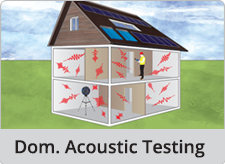Offices Nationwide
• Glasgow
• Newcastle
• Manchester
• Portsmouth
• Wakefield
• Sheffield
• Birmingham
• Wrexham
• Cardiff
• Peterborough
• Milton Keynes
• London
• Plymouth
• Anglesey
• Glasgow
• Newcastle
• Manchester
• Portsmouth
• Wakefield
• Sheffield

Sound Transmissions
Paths can be interrupted by insulation and blocking air paths. A material's insulation is governed by mass, stiffening and damping...more

Noise Disturbance
Building acoustics can help to mitigate the effects of noise disturbance which can have negative effects on your health and well-being...more
Kirton - Server Room Testing - 0114 368 0192
The office that covers this area is: Sheffield
Phone Number: 0114 368 0192 Email: kirton@e2consultants.co.uk
Our other services include:
Server Room Testing can also be known as:
Fire Suppression Testing, Room Integrity Testing, Fire Suppression Room Integrity Testing,


Copyright 2025 E2 Specialist Consultants Limited
Company No. 06728970









































